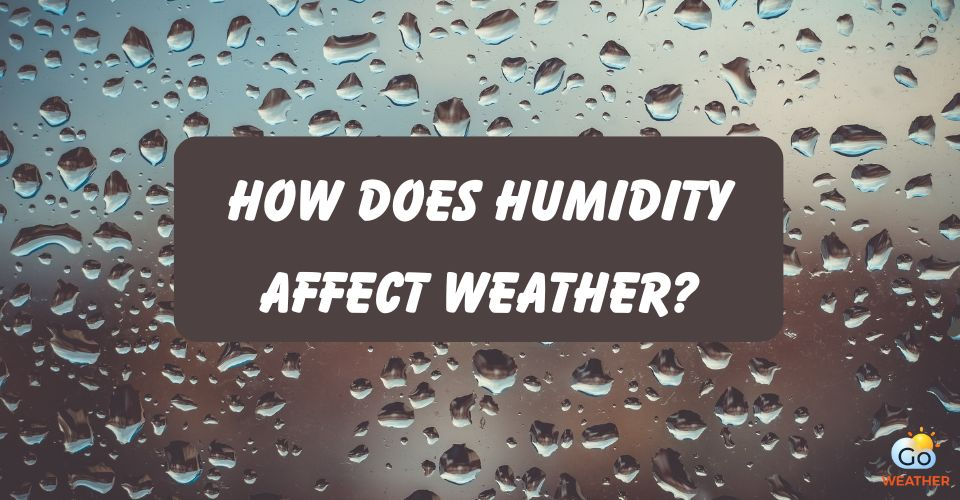The Importance of Weather Forecast and Wind Direction [Full Guide]
Wind is one of the crucial elements of weather, along with temperature, humidity, clouds, etc. Have you ever noticed that wind speed and direction are always included in a weather forecast or report? Are you curious about the relationship between weather forecast and wind direction, its effects on the weather, and the instruments meteorologists use to measure the wind? Check out this article now to learn more!
.jpg)
Weather forecast wind speed and direction
What is Wind Direction? How is It Measured?
Wind direction is the direction from which the wind originates. For example, a northerly or north wind originates from the North and blows from North to South.
A wind vane or weather vane measures wind direction.
.jpg)
Wind direction is the direction from which the wind originates
Wind direction is typically reported in degrees. A wind direction of 0° is due North on the compass, a direction of 180° is due South, and 270° would indicate a wind emanating from the west.
The cardinal points are traditionally used to identify four wind directions: north, south, east, and west. These are referred to as the primary winds. We can now use more complex wind direction techniques to measure half-winds:
-
Northeast (NE)
-
Southeast (SE)
-
Northwest (NW)
-
Southwest (SW)
.jpg)
Weather with wind direction
And quarter-winds:
-
North-northeast (NNE)
-
East-northeast (ENE)
-
East-southeast (ESE)
-
South-southeast (SSE)
-
South-southwest (SSW)
-
West-southwest (WSW)
-
West-northwest (WNW)
-
North-northwest (NNW)
What Causes Wind Direction?
Three primary factors combine to create and determine wind direction: air pressure, the Coriolis Effect, and friction.
Air pressure (Atmospheric pressure)
Air pressure is one of the main factors determining wind direction. Traveling from the areas of high pressure to the areas of low pressure, the air always attempts to balance out pressure differences.
.jpg)
Air pressure is one of the main factors determining wind direction
A high-pressure system and a low-pressure system are next to each other causing wind direction to flow clockwise and flow outward toward a low-pressure system.
And the low-pressure system is what causes wind direction to flow counterclockwise and inward.
This phenomenon is also referred to as cyclonic flow—one of the elements that can combine to create a tropical cyclone, hurricane, or typhoon.
Besides, heat and air pressure also cause the wind to shift direction.
For instance, sea breeze forms when the land heats faster than the water, then the heated air rises above and blows from the higher-pressure water inland. On the other hand, a land breeze forms when the opposite happens.
Coriolis effect
When discussing the weather forecast and wind direction, the Coriolis Effect must be mentioned, as it also influences the direction of the wind.
.jpg)
Coriolis effect
Even though wind travels from high-pressure areas to low-pressure areas, it does not blow in a straight line or flow directly from high to low. That is because the Earth rotates from west to east.
This phenomenon is known as the Coriolis effect which can be seen closer to the pole regions.
Generally speaking, the spin of the Earth from west to east causes winds to travel and blow counterclockwise and clockwise. In the Northern Hemisphere, the Earth’s rotation causes winds to the right (and to curve to the left in the Southern Hemisphere).
Due to the Coriolis effect, in the Northern Hemisphere, winds blow counterclockwise around an area of low pressure and clockwise around an area of high pressure.
Friction
Surface-level winds are greatly influenced by friction, as this is where the wind encounters different surfaces.
.jpg)
Friction also affects the wind direction
For example, if the wind blows toward a building, then it has to go through a change in direction for sure. It could either go around the building or rise above it, but the presence of the building causes a wind direction change.
Besides, when encountering a rougher surface, the wind will slow down, decreasing the Coriolis deflection. But encountering a smoother surface will cause the opposite.
|
Read next:
|
Why is It Important to Know Wind Direction?
As mentioned above, the wind is one of the primary elements of weather and climate. It is also related to the formation of different weather systems on the planet.
Wind transports temperature and moisture from one area to another; hence, weather conditions change with the change in wind direction. In other words, a change in wind direction and speed will result in a change in weather.
.jpg)
Weather conditions change with the change of wind direction
For example, feeling a gust of wind could be a sign of a thunderstorm approaching or another atmospheric turbulence.
Obviously, wind direction and wind speed are crucial for monitoring and forecasting weather patterns and global climate as well. That’s why it’s important to talk about the weather forecast and wind direction.
How to Read Wind Direction?
These days, people use different devices to measure the wind direction and the wind speed as well. Here are a few basic instruments:
Windsock
This device has a simple design. It measures wind direction and provides a rough idea of its intensity.
Windsocks include a tubular piece of fabric or a thin and flexible fabric attached to the pole.
Either the pole or the harness that’s attached to the windsock can rotate when the wind direction changes; hence, the direction of the windsock indicates the wind direction.
.jpg)
Windsock
Weathervane
This instrument works quite similarly to a windsock. It spins and points toward the source of the wind, using the symbols N (North), S (South), W (West), and E (East).
Weather vanes are mounted on the highest spot of a structure, such as a building, without obstructions that could block wind flow. The first recorded weather vane was invented by Greek astronomer Andronicus as early as the first century BC.
.jpg)
Weathervane
Digital wind vane
This instrument shares basic design elements with a classic weather vane but is much more sophisticated. A digital wind vane is considered an essential component of a weather station.
Together with these instruments, meteorologists also use other tools to measure the wind, of which anemometers are important devices used to measure wind speed.
.jpg)
Digital wind vane
Conclusion
As you can see, wind direction is quite a complicated term to fully understand. Together with wind speed, wind direction can significantly affect the weather. That is why it is essential to measure and forecast the direction of the wind (and the wind speed). We hope that you find the information about weather forecast and wind direction in this writing interesting.



![What Are Different Types of Precipitation and How They Form? [Updated]](https://admin.goweatherforecast.com/images/1732680922.png)






0 Comments
Leave a Comment
Your email address will not be published. Required fields are marked *